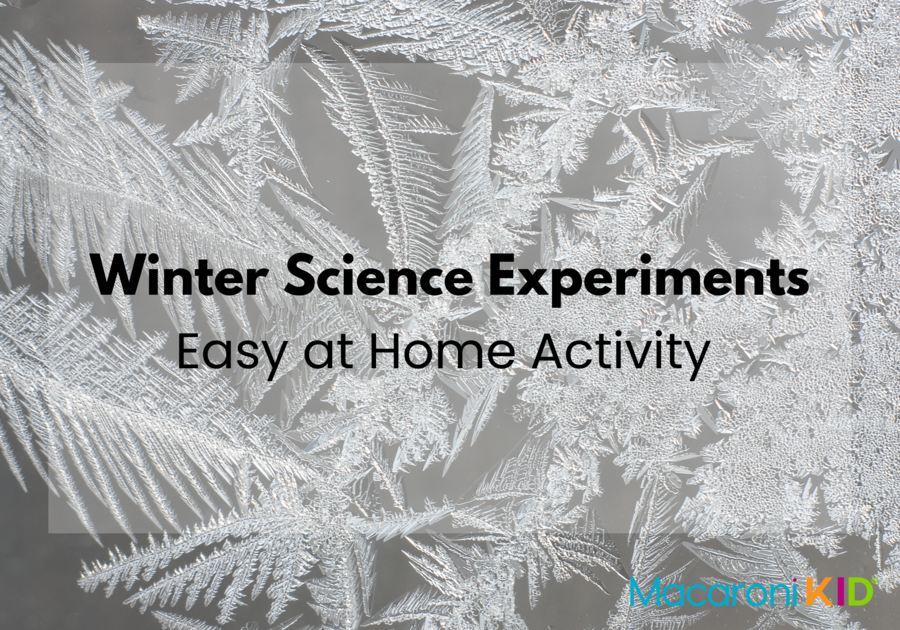Winter is here, and it's the perfect time to explore some cool science experiments right from the warmth of your home! From ice to snow, there are so many awesome winter-themed experiments you can try. Grab your coat (just in case) and get ready for some chilly fun!
1. Frozen Bubbles
Ever wonder what happens when you try to blow bubbles in the cold air? Let’s find out!
What You Need:
- Dish soap
- Glycerin (optional, makes bubbles last longer)
- A bubble wand or straw
- Water
- A freezer (or a really cold day outside)
How to Do It:
- Mix 1 cup of water, 2 tablespoons of dish soap, and 1 tablespoon of glycerin (if you have it) in a bowl. Stir carefully.
- Dip the bubble wand or straw into the soapy mixture.
- Take your bubble wand outside on a cold day, or place the mixture in the freezer for about 10 minutes before you go outside.
- Blow bubbles! Watch them freeze and turn into beautiful, sparkling ice bubbles! If it’s cold enough, the bubbles may freeze before they pop!
Why It Works:When the temperature is really low, the water inside the bubbles freezes almost instantly, creating a magical, icy effect. The glycerin helps the bubbles last longer.
2. Snow in a Jar
Bring snow indoors and watch it melt, then turn back into snow again!
What You Need:
- Baking soda
- Shaving cream (foam, not gel!)
- A spoon
- A jar or bowl
How to Do It:
- Put about 3 cups of baking soda into your jar or bowl.
- Add shaving cream to the baking soda (about 1 cup). Mix it together until it looks like fluffy snow.
- Use a spoon to mold the "snow" into snowball shapes and play with it like real snow!
Why It Works:The baking soda and shaving cream create a snowy texture, and the result feels like snow but doesn’t melt! It's soft, squishy, and perfect for indoor play.
3. Homemade Snowflakes
No snow outside? No problem! You can create your own snowflakes.
What You Need:
- Paper
- Scissors
- A pencil
- Glitter (optional)
- Glue (optional)
How to Do It:
- Start by folding a square piece of paper in half, and then in half again to make a triangle.
- Draw a design on the triangle with a pencil. You can make cuts along the edges to create patterns.
- Carefully cut along your pencil lines (ask an adult for help if needed!).
- Unfold the paper, and you’ll see your beautiful snowflake!
Why It Works:Snowflakes are formed when water freezes in the clouds in unique ways, creating patterns. When you cut your own snowflake, you’re mimicking how nature creates them!
4. Hot Water Freeze Challenge
Can hot water freeze faster than cold water? Let’s put this theory to the test!
What You Need:
- Two cups or bowls
- Hot water (not boiling, just very warm)
- Cold water (from the tap)
- A freezer
How to Do It:
- Fill one cup with hot water and the other with cold water.
- Place both cups in the freezer and set a timer.
- Check both cups after 30 minutes and see what happens!
Why It Works:This experiment tests the “Mpemba effect,” which is when hot water can freeze faster than cold water under certain conditions! The reason for this can be pretty tricky, but it has to do with how water molecules move when they’re heated and then cooled quickly.
5. Ice Melting Race
Let’s see which object melts ice the fastest!
What You Need:
- Several ice cubes
- Salt
- A plate
- A stopwatch or timer
- Different items to test (e.g., paper, metal spoon, cotton cloth, etc.)
How to Do It:
- Put 3-4 ice cubes on a plate.
- Sprinkle a little bit of salt on each ice cube.
- Start your timer and see which cube melts the fastest. You can try using different objects to see how they affect the ice, like placing a metal spoon, a cotton cloth, or even a plastic toy next to the ice.
- Record how long it takes each cube to melt.
Why It Works:Salt lowers the freezing point of water, which means it can melt ice faster. This experiment is a fun way to learn about how salt is used on roads in the winter to help melt ice!
This article was written with the help of ChatGPT



